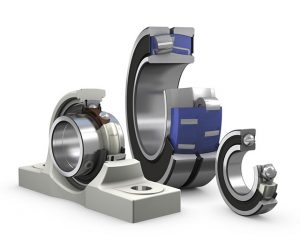 Over the past decade, the food and beverage industry has faced a succession of new challenges. Take brewing, for example. Beer markets were once characterised by high volumes, simple product portfolios and strong margins. Today, customers want a wider choice, and to pay less for it. Research by McKinsey found that the number of new beers available in major European markets increased between three and eight times between 2007 and 2012, for example. And in Germany, the share of beer producers’ revenues coming from discounted products has risen from 20% to 70% over the last decade. In real terms, retail beer prices in the country have halved since 1993.
Over the past decade, the food and beverage industry has faced a succession of new challenges. Take brewing, for example. Beer markets were once characterised by high volumes, simple product portfolios and strong margins. Today, customers want a wider choice, and to pay less for it. Research by McKinsey found that the number of new beers available in major European markets increased between three and eight times between 2007 and 2012, for example. And in Germany, the share of beer producers’ revenues coming from discounted products has risen from 20% to 70% over the last decade. In real terms, retail beer prices in the country have halved since 1993.
Those trends are placing significant demands on manufacturing facilities. On one hand, producers are reconfiguring their plants and processes for improved flexibility and agility, allowing them to make a wider variety of products and to respond faster to customer preferences o. On the other hand, they need to maximise output and productivity to keep costs under control.
To achieve either objective, uptime and reliability become ever more critical, as companies seek to wring every drop of capacity from their plants. Leading brewers are increasingly adopting innovative technologies to reduce the incidence of planned or unplanned downtime.
Managing complexity
When the 131-year-old Erdinger Weißbräu brewery, the largest family-owned wheat beer brewery in Germany, decided to modernise its filling plant last year, the redesign brought up some potential maintenance issues.
In redesigning the filling plant, Erdinger and its machinery supplier realised that manual lubrication would not be possible, with more than 3,000 lubrication points across the site from brewhouse to shipping. On consultation with SKF, it was decided that a sectional lubrication system would increase system availability, reduce the use of lubricant and minimise wear and tear on the equipment.
 SKF’s EDL1 (Electric Driven Lubricator) sectional lubrication system was chosen for installation, because it could cope with the complexity. The system at the brewery has 90 sections and three barrel pumps that supply the main lines feeding the thousands of lubrication points in two halls and a connecting tunnel.
SKF’s EDL1 (Electric Driven Lubricator) sectional lubrication system was chosen for installation, because it could cope with the complexity. The system at the brewery has 90 sections and three barrel pumps that supply the main lines feeding the thousands of lubrication points in two halls and a connecting tunnel.
The electrically-driven booster pumps are capable of generating high from low outlet pressure, enabling even the furthest points in the shipping bay to be reached with ease. The automated lubrication system’s integrated status monitoring feature provides real-time operational data and makes possible remote maintenance, increasing the reliability of the zoned system.
Offering access to every location in the filling system and having centralised control have proved invaluable for the brewery, as lubricant timing and quantity adjustments can be made easily and faults localised quickly. The result has been greater than expected system efficiency in the brewery and significantly reduced lubricant consumption.
The solution has been highly cost-effective. This is because connecting materials and supply pumps have been re-used, and no compressed air was needed. Power consumption and maintenance have been kept to a minimum.
Sealed bearings
At another beverage plant, a fundamental change in lubrication approach helped to address a maintenance challenge on a bottle filling station, where bottles are cleaned, filled and sealed in a single process. Regular cleaning of the area maintains high standards of hygiene and food safety – but this can also cause damage to bearings. The company found that stainless steel deep groove ball bearings, although sealed and greased for life, were leaking grease and admitting water during washdown.
The solution was the replacement of the conventional grease-filled bearings with SKF units lubricated with Solid Oil. This is a polymer matrix that is impregnated with lubricant. It remains ‘trapped’ within the bearing, so will not leak out during operations such as high pressure washdown. The change had a huge effect: bearing service life was extended from 12 weeks to two years, while maintenance costs were slashed – and leakage almost completely eliminated.
In the lubrication solution at both the brewery and at the beverage plant, unplanned stoppages have been minimised and productivity maximised.

